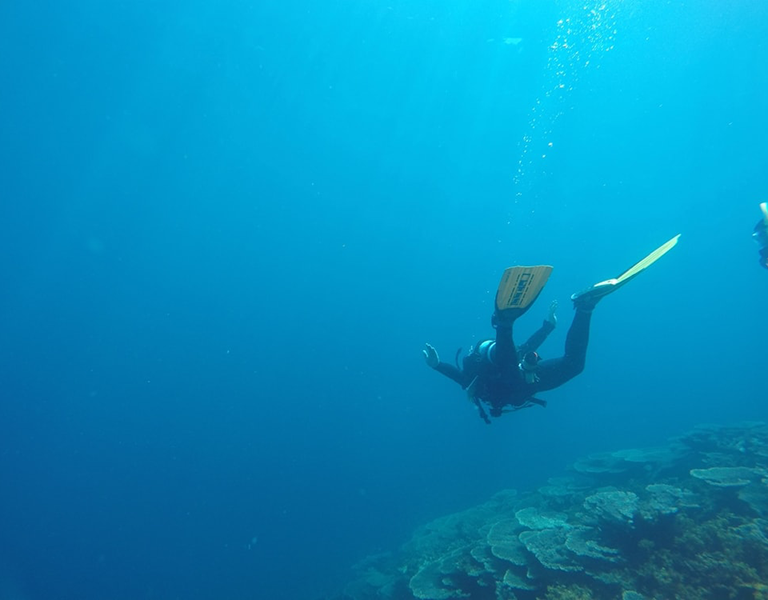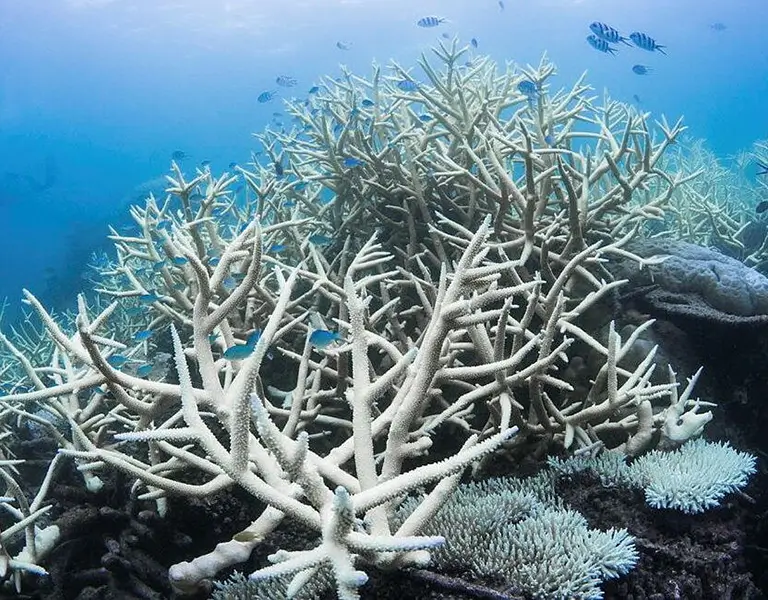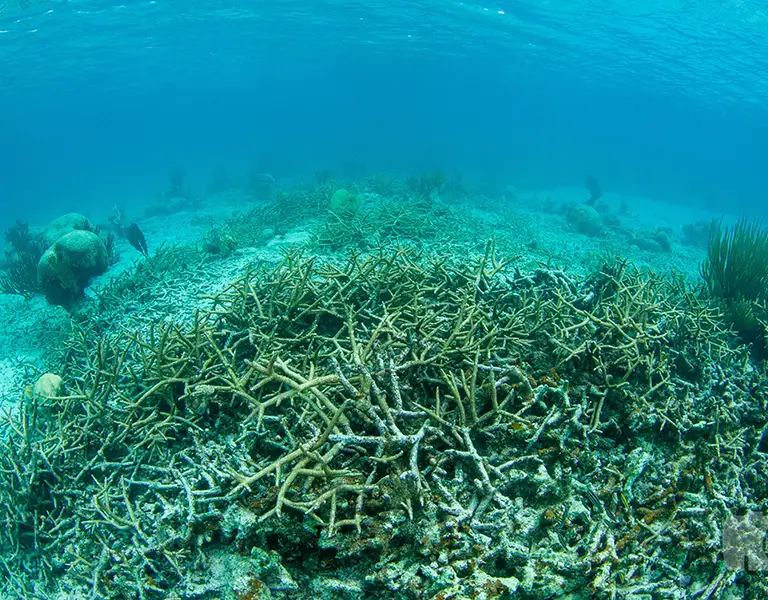The world’s oceans hold immense potential as the next frontier for sustainable food production and climate solutions. Regenerative ocean farming represents a revolutionary approach that combines environmental restoration with economic opportunity, offering hope for both marine ecosystems and coastal communities worldwide.
Key Takeaways
- Regenerative ocean farming can produce 130,000 pounds of kelp and 250,000 shellfish annually on just 20 acres while requiring zero inputs1
- The approach could create 50 million jobs globally if implemented across just 0.1% of the world’s oceans2
- Ocean farms help absorb excess nutrients, sequester carbon, and rebuild reef ecosystems while generating substantial revenue. These systems complement coral restoration efforts by creating healthier marine environments that support diverse marine life.
- Coastal communities benefit from new employment opportunities and enhanced marine biodiversity
- This sustainable form of agriculture offers tremendous potential to mitigate climate change and support food security
Regenerative Ocean Farming
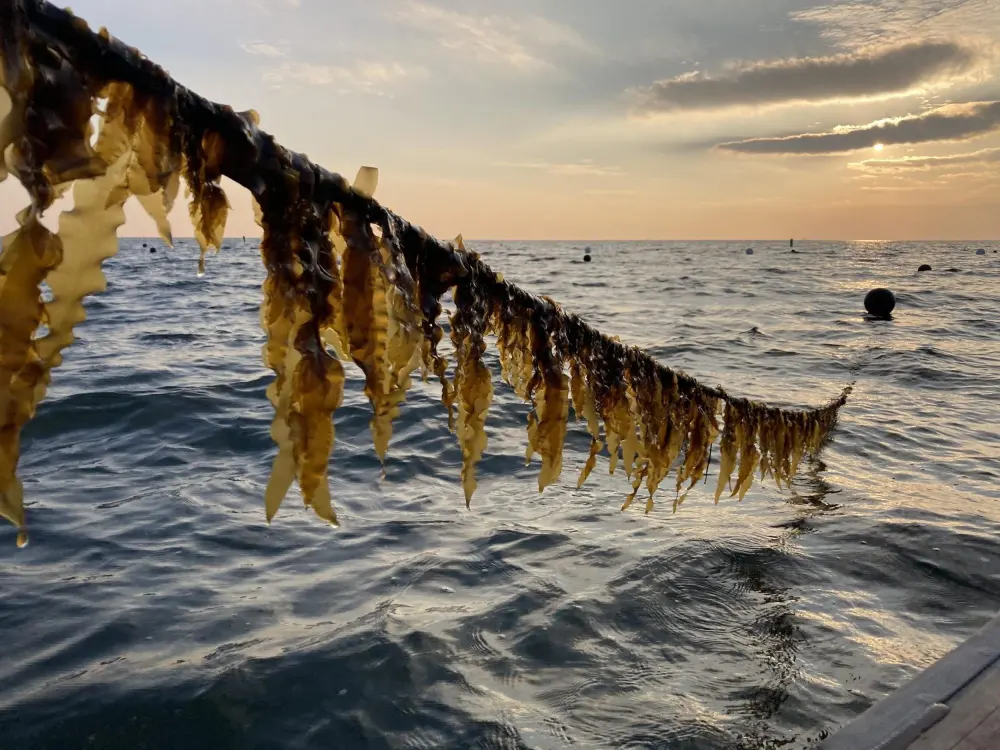
Regenerative ocean farming represents a groundbreaking polyculture system that grows seaweed and shellfish together in vertical underwater gardens. Unlike traditional aquaculture, this method requires zero inputs—no freshwater, fertilizer, land, or feed—while simultaneously restoring marine ecosystems.
This innovative approach takes advantage of every depth of water column, from surface to seafloor. The technique involves suspending a simple structure of ropes and buoys between the sea surface and seabed, on which scallops, clams, oysters, mussels, and seaweeds are grown at different depths.
The system mimics the natural diversity of ocean reefs by cultivating multiple species that work in concert to revive ecosystems. Each crop plays a vital role—for example, a single adult oyster can filter up to 50 gallons of water daily3, while seaweed absorbs carbon dioxide and excess nutrients.
Regenerative Ocean Farmers
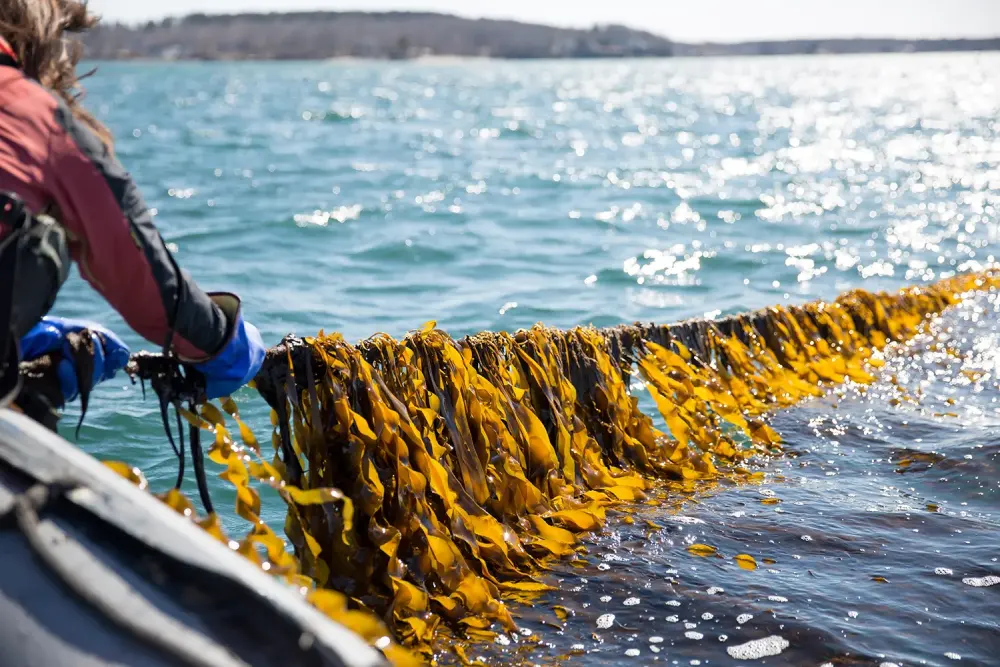
Ocean farmers represent a new generation of environmental stewards who are transforming how we approach marine food production. These pioneering individuals combine traditional knowledge with cutting-edge science to create sustainable livelihoods while healing ocean ecosystems.
Regenerative ocean farmers focus on building polyculture systems rather than monoculture operations. GreenWave’s ten-year goal is to provide training, tools, and support to a baseline of 10,000 regenerative ocean farmers to catalyze the planting of one million acres4.
The entry barrier for starting ocean farming remains remarkably accessible. With 20 acres, a boat, and $20,000-$50,000, individuals can establish their own regenerative ocean farm5. This accessibility opens opportunities for coastal communities seeking sustainable alternatives to declining traditional fisheries.
Ocean Farms
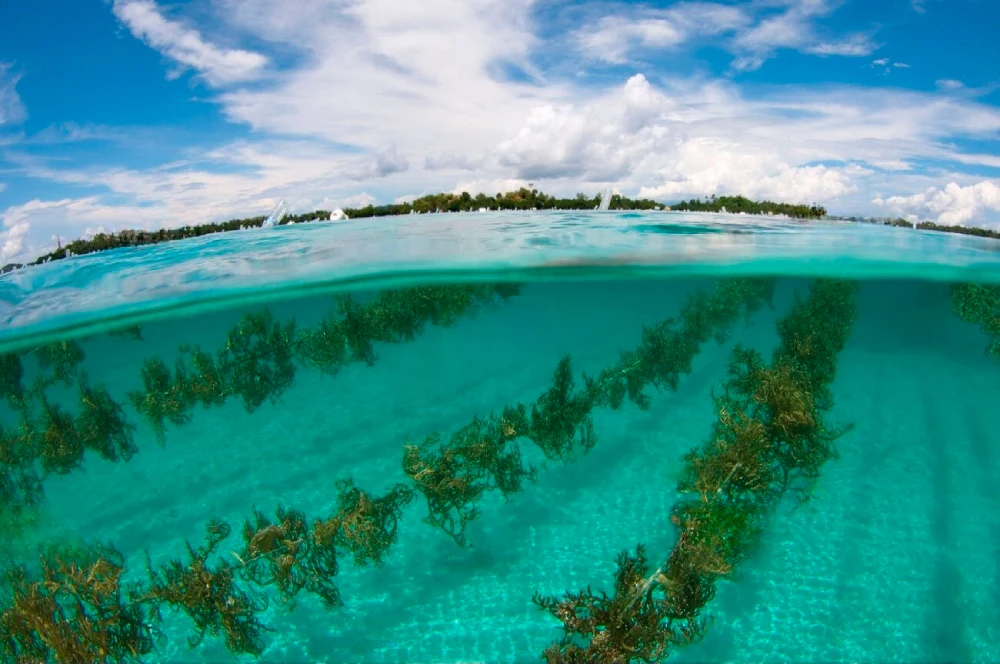
Modern ocean farms serve multiple functions beyond food production. These underwater gardens act as biodiversity havens, carbon sinks, and storm surge protection systems while generating economic returns for coastal communities.
A mature, twenty-acre regenerative ocean farm can produce up to 68 tons of nutritious seaweed and 250,000 shellfish6. These harvests create diverse revenue streams, from direct food sales to value-added products like seaweed fertilizers and bioplastics.
Ocean farms require minimal space while maximizing yield. Since the farms sit vertically below the surface, they produce high yields with a small footprint, making them ideal for regions facing land scarcity or declining agricultural productivity.
The infrastructure supporting ocean farms remains simple yet effective. Farmers use biodegradable rafts and rope systems that work with natural currents and tidal patterns, minimizing environmental disruption while maximizing production efficiency.
Climate Change
Ocean farms offer powerful solutions to combat climate change through multiple pathways. Seaweed grows rapidly—up to two feet per day—absorbing large amounts of carbon dioxide during photosynthesis while helping buffer local ocean acidification.
Recent studies at the University of California, Santa Barbara found that growing seaweed in 3.8% of federal waters off the California coast could completely neutralize California’s agricultural emissions.
Beyond carbon sequestration, farmed seaweed addresses climate change through practical applications. Through photosynthesis, seaweed can take up carbon in surrounding water, helping buffer the impacts of ocean acidification locally. When added to livestock feed, seaweed reduces methane emissions by up to 82% in cattle and 80% in sheep, significantly cutting agricultural greenhouse gas production7.
The climate benefits extend to coastal protection. Ocean farms help build resilience against rising sea levels and increasingly severe storms by creating natural barriers and supporting healthy marine ecosystems that protect shorelines.
Ocean Farmers
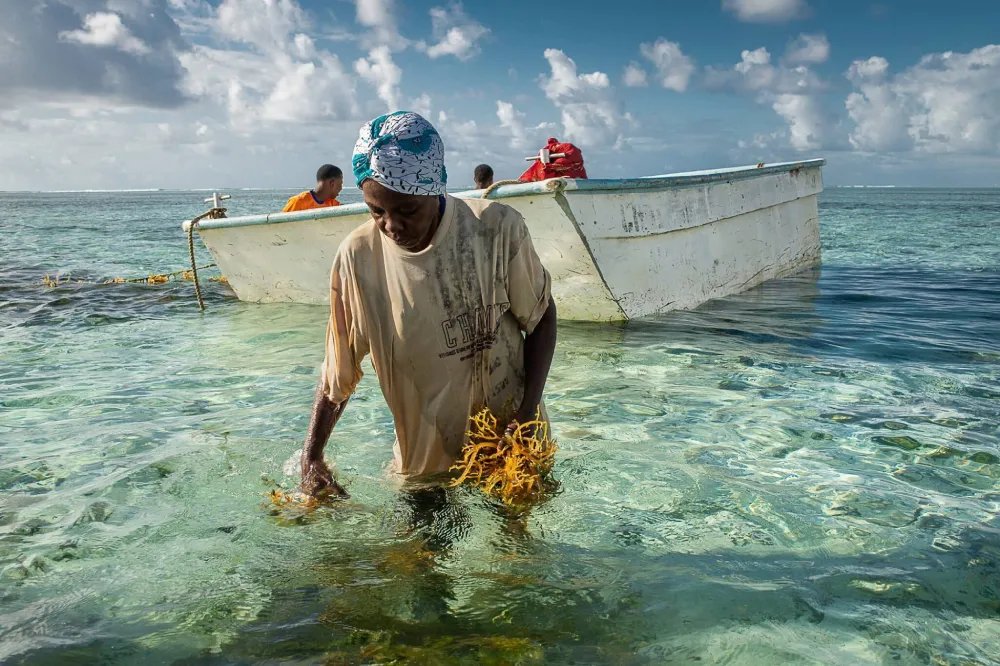
The growing community of ocean farmers represents hope for sustainable coastal economies. These entrepreneurs combine environmental stewardship with business acumen, creating profitable enterprises that regenerate marine ecosystems rather than depleting them.
Over 3 billion individuals—some among the world’s poorest—depend on healthy oceans for their livelihoods, with oceans connected to over 350 million direct and indirect jobs8.
Ocean farmers work within the broader blue economy framework, contributing to sustainable economic growth while preserving ocean health. Their operations support marine biodiversity by creating habitat for numerous species while improving water quality through natural filtration.
Training programs worldwide are expanding access to ocean farming knowledge. Organizations like GreenWave provide comprehensive support, from permitting guidance to market connections, helping new farmers succeed in this emerging industry.
Regenerative Ocean
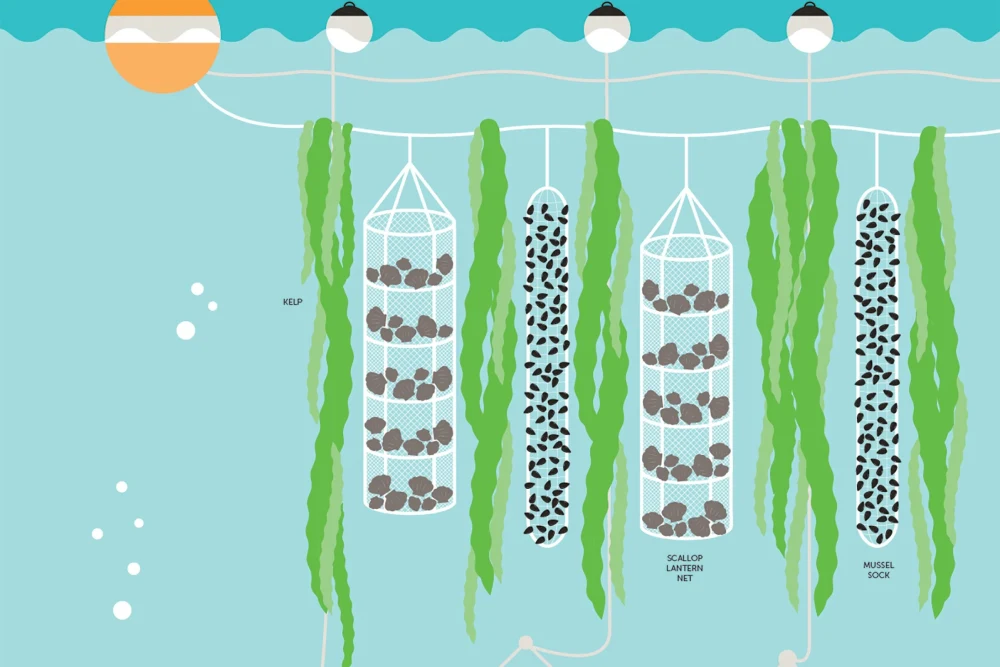
The concept of regenerative ocean practices extends beyond farming to encompass holistic marine stewardship. This approach focuses on rebuilding degraded coastal ecosystems while creating sustainable economic opportunities for dependent communities.
Regenerative ocean strategies integrate multiple marine activities—from restoration to sustainable fishing—to create synergistic benefits. These systems work to restore natural ocean processes while supporting human communities that depend on marine resources.
The approach emphasizes community engagement and local ownership. By involving coastal communities in planning and implementation, regenerative ocean projects ensure cultural sensitivity while building local capacity for long-term stewardship.
Scientific research supports the regenerative ocean concept through demonstrated benefits. Studies show that macroalgae export approximately 173 Tg C annually to sediments and deep-sea waters, representing substantial carbon sequestration from marine ecosystems9.
Environmental Benefits

The environmental advantages of regenerative ocean farming extend far beyond food production. These systems actively improve marine ecosystem health through multiple mechanisms that address pressing environmental challenges.
Nutrient pollution represents a major threat to coastal waters, but ocean farms help absorb excess nutrients from agricultural runoff and other sources10. This natural filtration process reduces harmful algal blooms while improving water quality for marine life.
Biodiversity enhancement occurs naturally around ocean farms. The three-dimensional structures provide habitat for fish, invertebrates, and other marine organisms, effectively creating artificial reefs that support diverse species communities. These underwater gardens can serve as biodiversity hotspots that complement natural reef systems.
Ocean farms also contribute to rebuilding reef ecosystems by providing nursery habitat for juvenile fish and creating corridors that connect fragmented marine habitats. This connectivity supports genetic diversity and ecosystem resilience.
Create Jobs
The job creation potential of regenerative ocean farming offers hope for coastal communities facing economic challenges. The blue economy sector demonstrates remarkable employment growth potential across multiple skill levels and demographics.
According to a World Bank study,11 farming seaweeds in just 0.1% of the world’s oceans—about 100 million acres—could create 50 million jobs. This massive employment potential spans direct farming positions to processing, marketing, and support services.
The diversity of opportunities within ocean farming supports inclusive economic development. From boat operators to marine biologists, the sector creates pathways for workers with varying educational backgrounds and skill sets.
Value-added processing creates additional employment opportunities in coastal regions. Seaweed products range from food ingredients to biofuels, cosmetics, and pharmaceuticals, supporting manufacturing jobs and entrepreneurship.
Young people particularly benefit from blue economy opportunities. The youth employment rate in fisheries and aquaculture is more than double that of adults. This trend offers hope for rural coastal communities seeking to retain young residents.
Commercial Farming
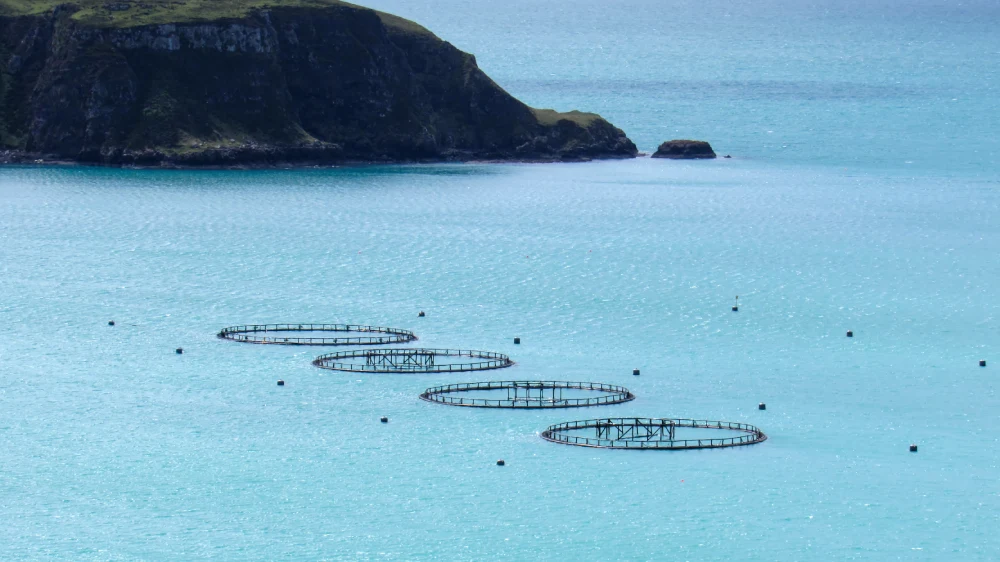
Commercial farming operations demonstrate the economic viability of regenerative ocean systems. These enterprises prove that environmental stewardship and profitability can align when proper management practices are implemented.
Successful commercial operations focus on polyculture systems that maximize both environmental benefits and economic returns. By growing multiple species together, farmers create diverse revenue streams while building ecosystem resilience.
Market development continues expanding for ocean-farmed products. Consumer demand for sustainable, nutritious foods drives growth in seaweed-based products, from snacks to supplements, creating reliable market opportunities for farmers.
Scaling commercial operations requires careful planning and community engagement. Successful farms balance production efficiency with environmental stewardship, ensuring long-term sustainability for both ecosystems and local communities.
Coastal Communities
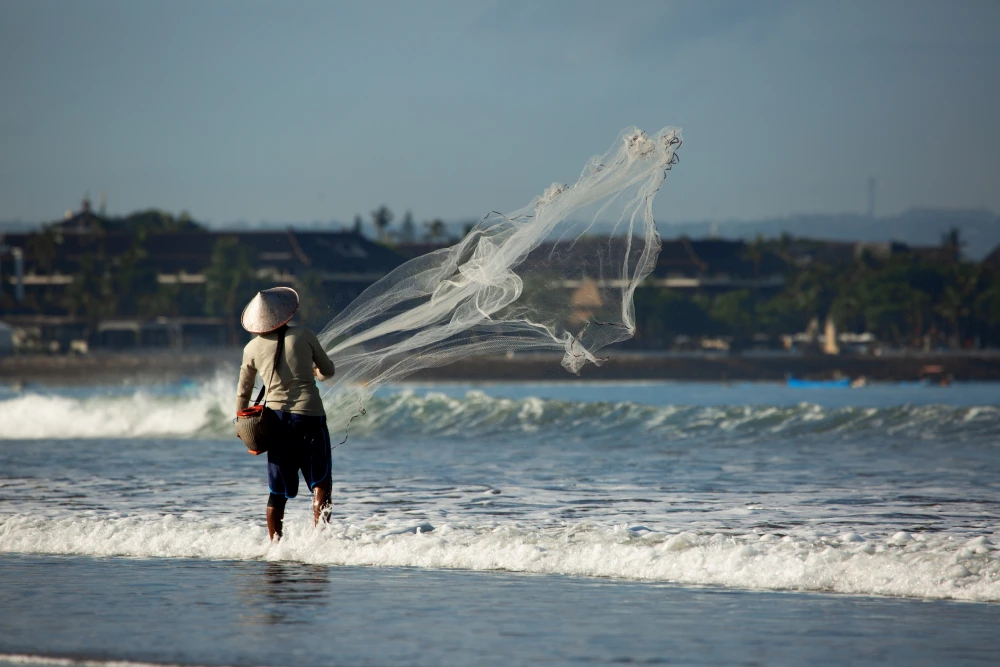
Coastal communities worldwide benefit tremendously from regenerative ocean farming initiatives. These projects offer economic diversification opportunities while supporting traditional maritime cultural practices and knowledge systems.
Local hiring prioritizes community members, ensuring that economic benefits remain within coastal regions. This approach builds local capacity while respecting traditional maritime skills and cultural connections to the sea.
Workforce development programs prepare community members for ocean farming careers. Training covers technical skills, business management, and environmental monitoring, creating pathways for long-term career advancement.
Community partnerships ensure that ocean farming projects align with local priorities and values. By involving residents in planning processes, projects build social acceptance while addressing specific community needs and concerns.
Conclusion
Regenerative ocean farming offers a transformative approach to marine stewardship that benefits both people and planet. By creating sustainable livelihoods while restoring ocean health, this innovative practice demonstrates that environmental and economic goals can align. As coastal communities worldwide face mounting challenges from climate change and other threats and economic uncertainty, ocean farms provide a beacon of hope—proving that our seas can be partners in building a more resilient and sustainable future.
About Coral Vita
Coral Vita is a mission-driven company dedicated to restoring our world’s dying and damaged reefs. Using innovative land-based farming techniques, Coral Vita grows diverse and resilient corals in months instead of the decades they take in nature. These corals are then transplanted into threatened reefs, helping to preserve ocean biodiversity while protecting coastal communities that depend on healthy reefs for protection, food, and income.
Founded by environmental entrepreneurs Sam Teicher and Gator Halpern, Coral Vita’s high-tech coral farms incorporate breakthrough methods to restore reefs in the most effective way possible. In 2021, the company was recognized as the inaugural winner of Prince William’s Revive Our Oceans Earthshot Prize Winner for their pioneering work in coral restoration.
To learn more about Coral Vita’s work or to get involved in coral reef conservation efforts, visit their website at www.coralvita.co or contact them directly through their Contact Us page.
FAQ
What is regenerative ocean farming and how does it work?
Regenerative ocean farming is a polyculture system that grows seaweed and shellfish together in vertical underwater gardens. It requires zero inputs while restoring marine ecosystems and sequestering carbon.
How many jobs could regenerative ocean farming create globally?
According to World Bank studies, farming seaweed in just 0.1% of the world’s oceans could create 50 million jobs while generating substantial economic returns for coastal communities.
What environmental benefits does ocean farming provide?
Ocean farms absorb excess nutrients, sequester carbon, provide marine habitat, improve water quality, and help buffer against ocean acidification while requiring no freshwater or fertilizer.
How much can a typical ocean farm produce annually?
A mature 20-acre regenerative ocean farm can produce up to 130,000 pounds of kelp and 250,000 bivalves annually with the capacity to generate over $100,000 in revenue.
References
- https://www.greenwave.org/our-model ↩︎
- https://blogs.worldbank.org/en/jobs/how-can-blue-economy-drive-development-and-jobs-youth ↩︎
- https://www.fisheries.noaa.gov/national/habitat-conservation/oyster-reef-habitat ↩︎
- https://www.foodinspiration.com/us/regenerative-ocean-farming/ ↩︎
- https://www.foodinspiration.com/us/regenerative-ocean-farming/ ↩︎
- https://www.ellenmacarthurfoundation.org/circular-examples/regenerative-ocean-farming-to-enhance-coastal-biodiversity-greenwave ↩︎
- https://caes.ucdavis.edu/news/feeding-cattle-seaweed-reduces-their-greenhouse-gas-emissions-82-percent ↩︎
- https://blogs.worldbank.org/en/jobs/how-can-blue-economy-drive-development-and-jobs-youth ↩︎
- https://www.nature.com/articles/ngeo2790 ↩︎
- https://smea.uw.edu/currents/regenerative-ocean-farming-how-can-polycultures-help-our-coasts/ ↩︎
- https://www.frontiersin.org/journals/marine-science/articles/10.3389/fmars.2017.00100/full ↩︎




